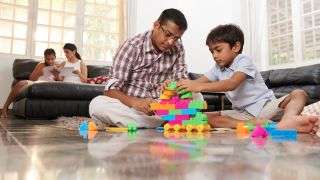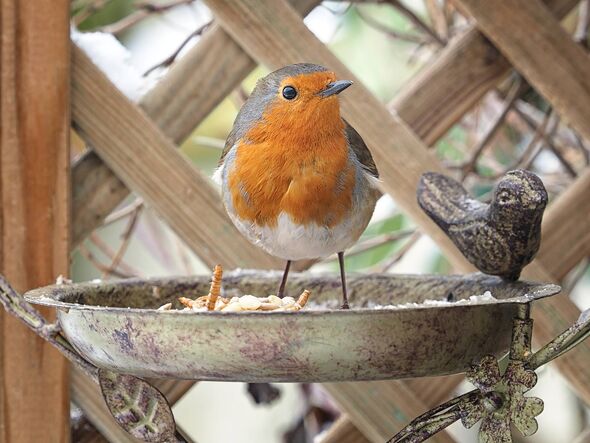
With a rocky year of pandemic-related educational disruptions ahead, many parents are looking for ways to help their kids learn at home. Toys advertised as teaching STEM might seem like one way to fill the gap. But do they really work?
The answer is yes, research shows that toys can indeed teach science, technology, engineering and math concepts — but don’t focus on advertising or fancy labels to find the best bets. There’s no minimum educational requirement that toys must reach to label themselves a “STEM toy,” so almost everything on the market is untested. Instead, experts say, look for toys that encourage open-ended, active play and problem-solving. Some proven winners? Tinkertoys, board games, decks of cards and building blocks.
“If I had a huge amount of money, I would donate it to getting a nice classic set of hardwood blocks for every child on Earth,” said Jeffrey Trawick-Smith, a professor emeritus at the Center for Early Childhood Play at Eastern Connecticut University. “The things we’ve seen children do — they use language, they do pretend play. [Blocks] are just magical toys.”
Classics of childhood
“As long as you’re teaching your kids to have fun and enjoy doing STEM, I think that’s the most important thing.”
Allison Master
Trawick-Smith’s work is part of a large body of research showing that creative, open-ended play is how young children learn STEM concepts. In preschool, for example, the construction of complex block buildings is associated with an improvement in math learning, according to a 2017 study published in the Journal of Early Childhood Research. Blocks, puzzles and shape toys boost spatial skills, according to a 2014 review article in the journal Trends in Neuroscience and Education. Spatial skills, in turn, are associated with later math learning, suggesting that the early exploration of shapes acts as a springboard for more complex math concepts.
There are five characteristics that make for a good educational toy, said Kathy Hirsh-Pasek, a psychologist at Temple University who studies learning in early childhood. The toy should be active, not passive like watching something on a screen. It should be engaging, encouraging the child to get into a flow of activity rather than distracting them with bells and whistles that interrupt their concentration. It should be meaningful, giving the child control and agency over play. It should encourage or allow for social play. And finally, it should be fun.
“One of the really cool things about everyday good, old-fashioned play is that it has these characteristics built in,” Hirsh-Pasek said.
Toys that allow children to build and create also have the advantage of being renewable, Hirsh-Pasek said. They’re different every time children return to them, meaning that kids don’t become bored of them easily.
Though adults certainly don’t have to participate in the building of every block tower, some grown-up guidance can help boost kids’ learning from play. In a study published in 2011 in the journal Mind, Brain and Education, Hirsh-Pasek and her colleagues gave preschoolers Mega Bloks (large, interlocking building blocks that look like giant LEGOs) to play with, alongside their parents. One group was told to play freely with the blocks. Another was told to build a helipad. The third group was given a preassembled helipad to play with. The kids who played with the goal of building the helipad exhibited the most spatial-related language compared with the other two, the researchers found. This is an example of the power of guided play, Hirsh-Pasek said.
Caregivers can encourage kids’ learning by asking open-ended questions and nurturing their curiosity, said Allison Master, a research scientist at the Institute for Learning & Brain Sciences at the University of Washington. When kids feel more connected to others while doing a STEM task, they enjoy it more — and kids who think STEM is fun and enjoyable are more likely to persist in formal STEM education, Master told Live Science. Building STEM into things you’re already doing that kids enjoy — measuring while baking, or making nature observations on neighborhood walks — can be very powerful, she said.
Playing games
One useful tool adults can use while playing with their children is “math talk,” said Trawick-Smith. This kind of talk encourages kids to think more deeply about math. For example, when teaching a preschooler about shapes, kids learn better when parents point out features like corners, sides and curves rather than simply labeling a shape as a triangle or a square, he said.
Board games and card games tend to provide excellent opportunities for math talk, Trawick-Smith said. For example, a parent might ask a child what number he or she needs to roll to reach the end of the gameboard, or encourage them to figure out how many spaces there are between their own game piece and another player’s. A card game like “War” requires kids to decide which of two numbers is larger, and parents can encourage mathematical thinking by asking kids how much larger one card is than another.
“These are less about naming numbers, rote memory counting and naming shapes, and more about really actually thinking about mathematical concepts,” Trawick-Smith said.
“If I had a huge amount of money, I would donate it to getting a nice classic set of hardwood blocks for every child on Earth.”
Jeffrey Trawick-Smith
Conveniently, math talk doesn’t require any toy purchases at all. Parents can play guessing games with their kids like “Which is the Most?” (All the books on the bookshelf or all the eggs in the fridge? All the toys in your toybox or all the socks in your drawer?) or play simple scorekeeping games like drop-the-clothespins-in-the-jar.
For those who are looking to expand their board game collection, Trawick-Smith recommends picking games that include dice, spinners or other counting-based methods of moving.
Batteries included
Educational experts aren’t in agreement about the relative benefits of screens and tech in teaching kids. But when choosing educational tech, the same rules of active, engaging, meaningful, social and fun apply.
There are plenty of tech toys and apps that allow for open-ended and creative play, said Sudha Swaminathan, a professor of early childhood education at Eastern Connecticut State University. For preschoolers, coding robots like Fisher-Price’s Code-a-Pillar and Terrapin’s Bee-Bot offer an introduction to programming; kids rearrange segments of the caterpillar or press buttons on the robot bee to direct its movements. A small study, not yet peer-reviewed, by Swaminathan and undergraduate researcher Jenna Mazza found that preschoolers who learned to program Bee-Bot to travel from one point to another actually improved their abilities in other math tasks, like completing patterns and comparing lengths.
For older kids, the free apps Scratch (for 8 and up) and ScratchJr allow kids to program their own characters and stories. The apps were developed by researchers from Tufts University, MIT and The Playful Invention Company. Research in press from Tufts University shows that kids who play with coding toys show improved problem-solving skills in other tasks. A recent study in the journal Educational Technology Research and Development involving kindergartners, first- and second-graders who used ScratchJr found that kids’ ability to grasp complex programming problems rose with age, though even the youngest grasped the foundational concepts.
Regardless of what STEM avenues parents want to pursue — whether planting some marigold seeds in a pot or playing with a programmable robot — the important thing is to make sure to keep the pressure off, Master said.
“As long as you’re teaching your kids to have fun and enjoy doing STEM, I think that’s the most important thing,” she said.
Sourse: www.livescience.com





